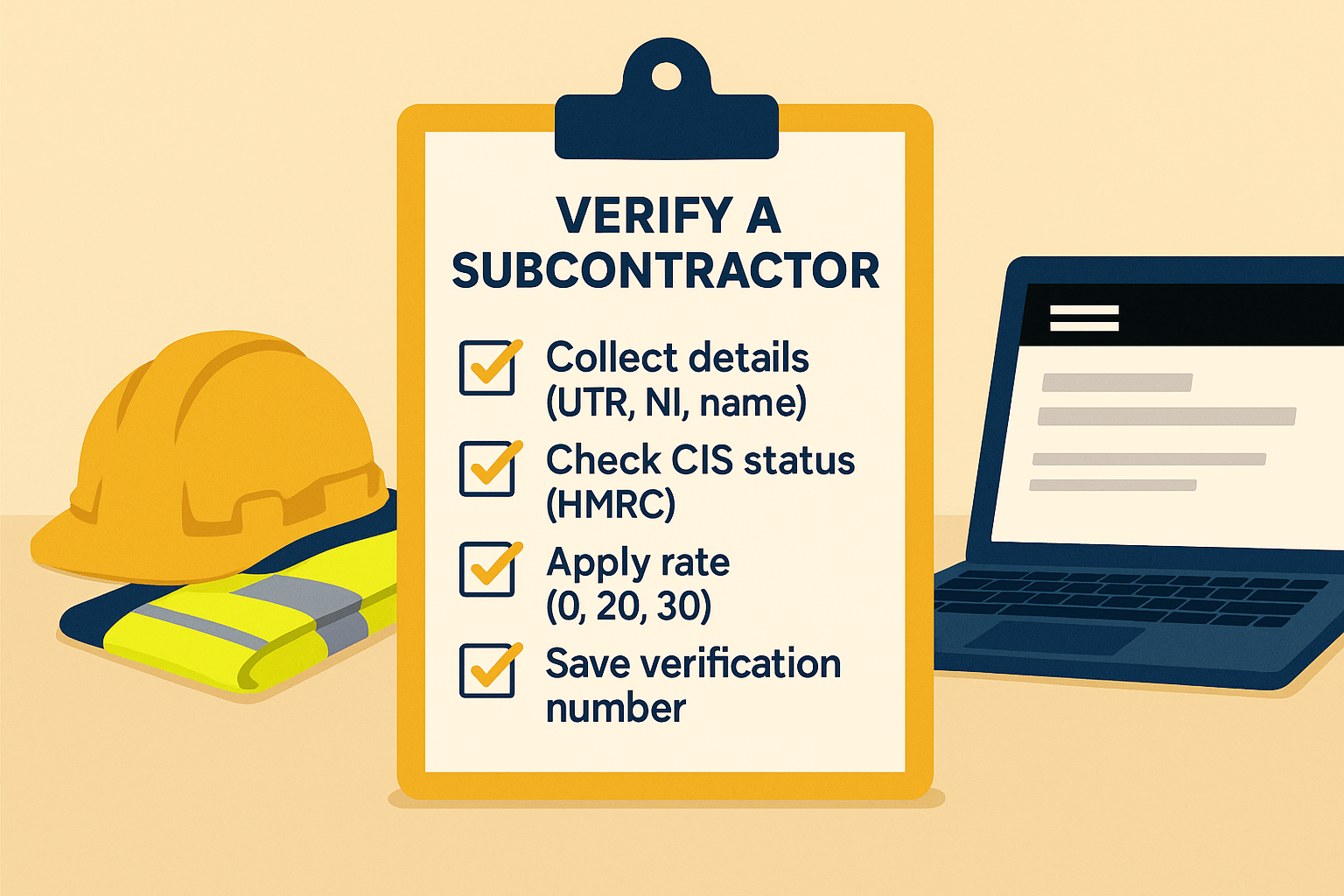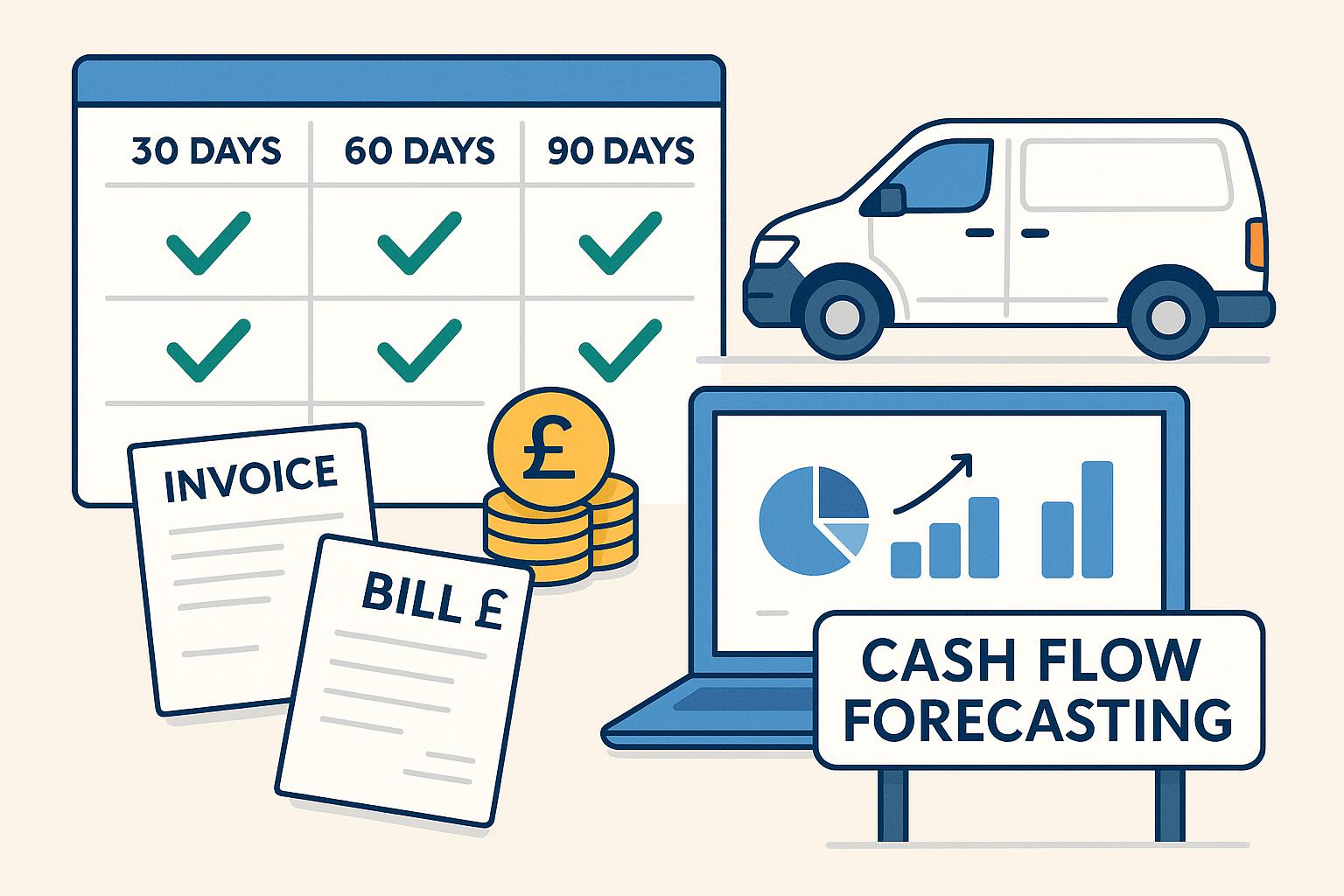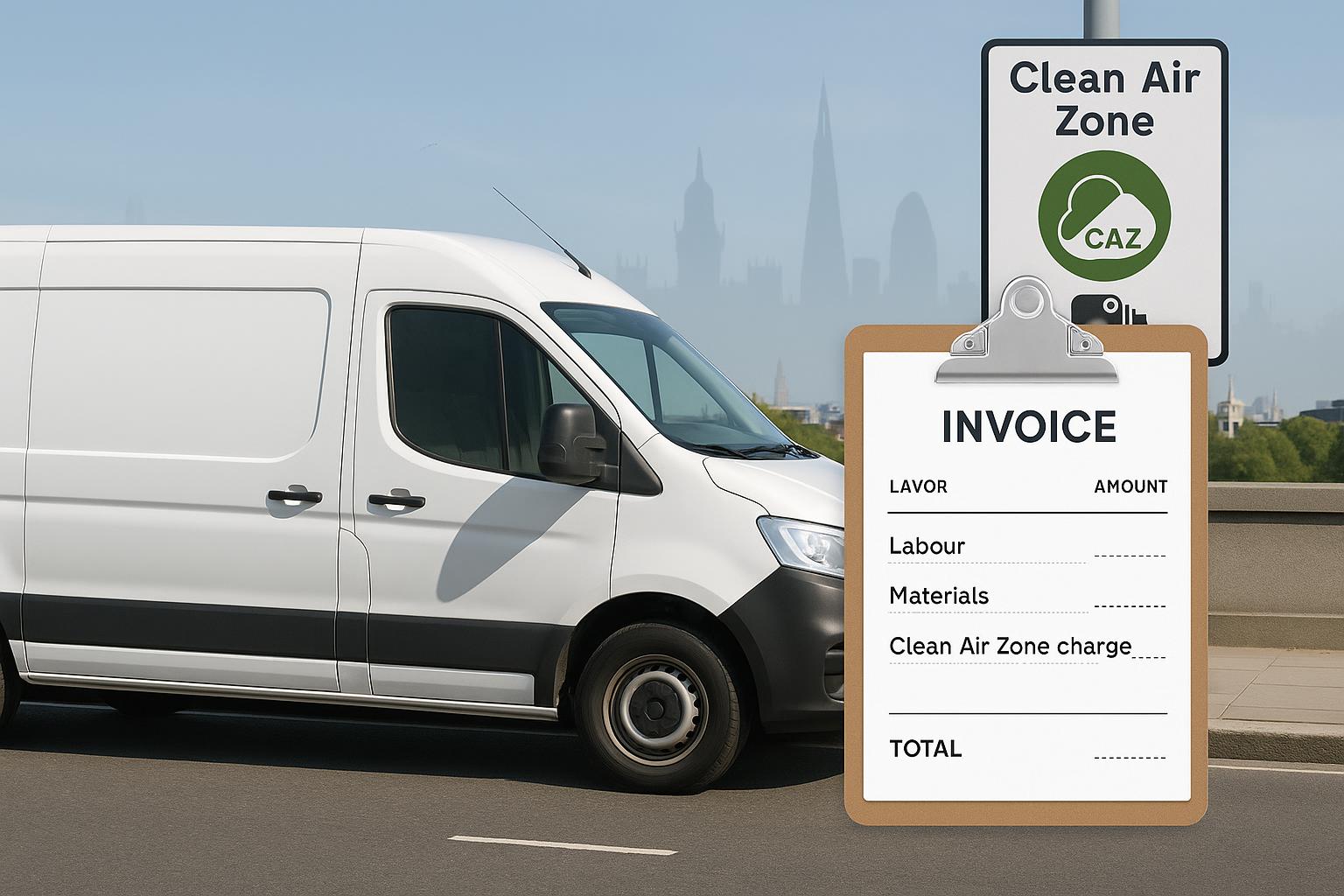
CIS subcontractor verification: what to collect, where to check and a simple automation to log rates
CIS subcontractor verification: what to collect, where to check and a simple automation to log rates
Category: Finance & Tax • Niche: CIS, HMRC, automations
- Contents: Who this is for • Quick answer • What you need • Where to verify • Step-by-step • Log the result automatically • When to re-verify • Common pitfalls • Helpful links • FAQ
Who this is for
Small contractors and trade firms that pay subcontractors under the Construction Industry Scheme. If you invoice through Xero or QuickBooks but still key CIS checks by hand, this guide shows you what to collect, where to check it and a quick automation to store the verification number and deduction rate for audit.
Quick answer
- You must verify a subcontractor with HMRC before paying them for the first time. HMRC confirms their CIS status and tells you the deduction rate to use: 0 percent (gross), 20 percent or 30 percent.
- Use the free CIS online service to verify and you will receive a verification number. Keep that number with the subcontractor’s record and use the rate HMRC returns on every payment.
- Re-verify if you have not included that subcontractor on a CIS return in the current or last two tax years, or if their details change.
What you need before you verify
Gather these details. Having them ready avoids unmatched responses.
- Subcontractor legal name
- Business type: sole trader, partnership or company
- UTR (unique taxpayer reference). For companies, the company UTR
- National Insurance number for sole traders and partners
- Company registration number for companies
- VAT registration number if registered
- Business address postcode
Tip: Ask for a photo of their HMRC letter showing the UTR if they are not sure. Mismatched UTR and name is the most common reason verifications fail.
Where to verify
- Free HMRC service: Sign in to the CIS online service
- Guidance: Verify subcontractors on GOV.UK
- Software option: many payroll and CIS add-ons can verify from inside the app once HMRC authorisation is set up. Check your product help if you prefer to work inside your accounting system.
Step-by-step: verify a subcontractor in minutes
- Sign in to the CIS online service using your Government Gateway ID.
- Choose Verify subcontractor and enter the details you collected.
- Submit. In most cases you get an instant result with the deduction rate and a verification number. At busy times allow up to 24 hours.
- Save the verification number, the rate and the date you verified in your records.
- Set the deduction rate on your payments to that subcontractor. Use 0 percent if HMRC confirms gross payment status, 20 percent in most cases, or 30 percent if HMRC instructs you to.
What if HMRC cannot match the details
- Double check spelling, UTR digits and NI number
- Ask the subcontractor to confirm their registration name and UTR with HMRC
- If still unmatched, call the CIS helpline listed on GOV.UK and keep a note of the call
Log the result automatically (low cost, 15 minutes)
You can automate the admin around verification so your office always has the rate and verification number to hand.
Simple flow
- A site-friendly form captures each new subcontractor’s details
- Office verifies on GOV.UK and pastes the verification number
- The flow stores the record in a tracker and notifies accounts to set the deduction rate
Text diagram
Form submit → Task created for office → Verify on GOV.UK → Paste verification number → Saved to tracker → Notify accounts
Tools you can use
- Google Forms or Microsoft Forms to capture details
- Google Sheets or SharePoint list as the tracker
- Zapier or Power Automate to create a task and notify accounts by email or Teams
Minimal build steps
- Create a form with fields for name, business type, UTR, NI number, company number, postcode, VAT number and an empty field called Verification number.
- Add a step in your office checklist to verify on GOV.UK and paste the verification number and rate into the form response.
- Use Zapier or Power Automate to watch for a new response and:
- Add a row in your tracker with all details and a status Verified
- Post a message to your accounts channel with the rate to apply
- Optional: set a reminder to re-verify after one tax year if you have not paid them again.
When to re-verify
- If you have not included the subcontractor on a CIS return in the current or last two tax years
- If their legal details change, such as business type or UTR
- If HMRC tells you their status has changed
Common pitfalls and how to avoid them
- Unmatched verification. Fix by checking UTR and name spelling, and collect NI number for sole traders
- Not keeping the verification number. Always store it with the rate and date
- Applying 20 percent when HMRC told you 30 percent. Lock the rate in your tracker and accounting system
- Forgetting to re-verify after long gaps. Use a dated reminder in your tracker
- Confusing CIS with VAT reverse charge. CIS affects tax deducted from labour payments; the reverse charge affects how VAT is accounted for between VAT registered firms. If you invoice contractors, see our guide on the reverse charge below
Helpful links and next steps
- Verify subcontractors on GOV.UK: What you must do as a CIS contractor
- Use the CIS online service: Sign in
- Trade press reminder about regular verification: ICAEW update
- Related Academy articles:
Short video: how CIS verification works
Share this article
Category
Financial management and tax guidance for trades
Ready to Transform Your Business?
Join the TrainAR beta and start using AR training in your business.
Join Beta ProgramStay Updated
Get weekly insights and new articles delivered to your inbox.
Comments (0)
Leave a Comment
No comments yet
Be the first to share your thoughts on this article!
Related Articles

Cash flow forecasting for trades in Xero or QuickBooks: simple setup, open banking tips and a one‑page template
Cash flow forecasting for trades in Xero or QuickBooks: simple setup, open banking tips and a one‑page template Category: Finance & Tax Niche: ca...

Offer finance to customers: interest‑free plans vs Kanda, Vendigo and Novuna explained
Offer finance to customers: interest‑free plans vs Kanda, Vendigo and Novuna explained Category: Finance & Tax • Niche: customer finance, interest...

How to add ULEZ or Clean Air Zone charges to your invoice (VAT and reverse charge explained)
Category: Finance & Tax • Niche: VAT, ULEZ/CAZ, invoicing, domestic reverse charge, job costing, Xero, QuickBooks Contents {#contents} - Quick an...

Cash flow forecasting for trades in Xero or QuickBooks: simple setup, open banking tips and a one‑page template
Cash flow forecasting for trades in Xero or QuickBooks: simple setup, open banking tips and a one‑page template Category: Finance & Tax Niche: ca...

Offer finance to customers: interest‑free plans vs Kanda, Vendigo and Novuna explained
Offer finance to customers: interest‑free plans vs Kanda, Vendigo and Novuna explained Category: Finance & Tax • Niche: customer finance, interest...

How to add ULEZ or Clean Air Zone charges to your invoice (VAT and reverse charge explained)
Category: Finance & Tax • Niche: VAT, ULEZ/CAZ, invoicing, domestic reverse charge, job costing, Xero, QuickBooks Contents {#contents} - Quick an...